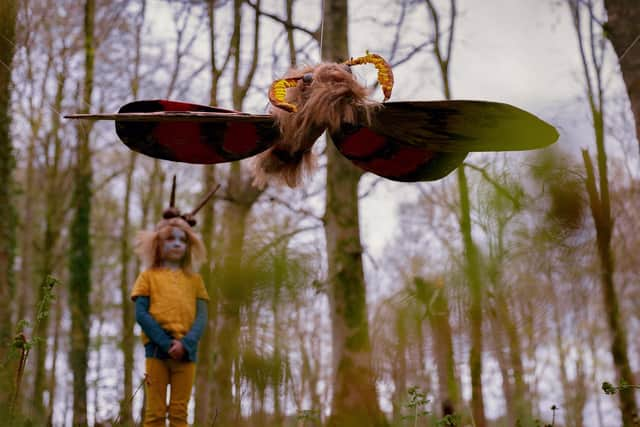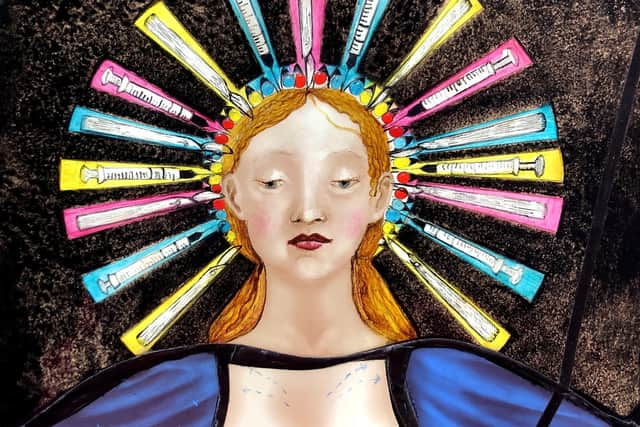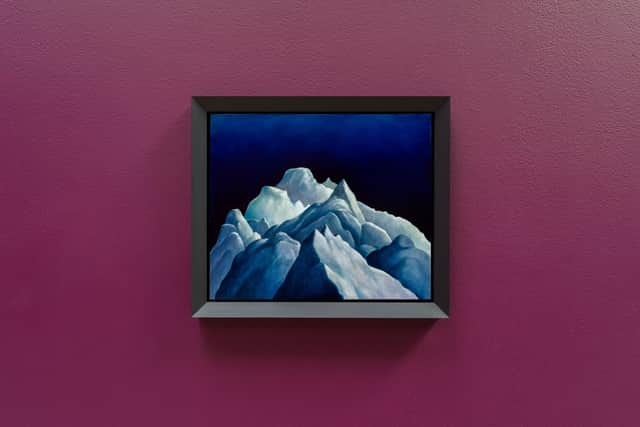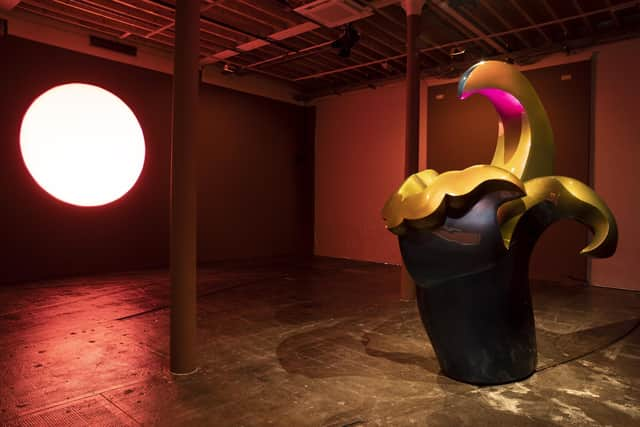Art reviews: Monster Chetwynd | Pinkie Maclure | Nicolas Party | Cathy Wilkes | Jala Wahid
Monster Chetwynd: Moths, Mount Stuart, Bute ****
Pinkie Maclure: Lost Congregation, CCA, Glasgow ****
Nicolas Party: Cretaceous, Modern Institute, Glasgow ***


Cathy Wilkes, Modern Institute, Glasgow ***
Jala Wahid: Conflagration, Tramway, Glasgow **
The moth is the underdog of the lepidoptery world. Everyone favours butterflies, despite there being only 59 distinct species in Britain compared with 2,500 different moths. The moth is a potent symbol in art, and a canary in the coalmine for those who monitor ecological diversity. Curators, however, will not hesitate to wage war at the slightest sign of a moth infestation.
These contradictions are all grist to the mill for Monster Chetwynd, champion of underdog species (she has already done bats and slugs), who chooses moths as the subject of her major commission this summer at Mount Stuart on the Isle of Bute.


Advertisement
Hide AdIn recent years, Chetwynd’s practice has shifted from performance towards film. The main work here is a ten-minute film shown in the Crypt along with some of the giant papier maché moths and pupae made as costumes and props. More are displayed in the Family Bedroom upstairs along with a dozen new paintings in her Bat Opera series. Her Folding House, made of reclaimed windows and recycled here as a “Moth Hub”, sits next to the front lawn.
Chetwynd’s work is an intriguing contradiction: it looks homespun, as if sprung from a primary school activity corner; her performances have the playful energy of a fancy dress parade. Only close-up does the skill and precision of it all become apparent.
Her film is similar: a patchwork of styles, from aged ciné camera footage to the latest in digital effects, which seems nevertheless to evolve into a coherent whole. She has chosen her collaborators with care: artists Margaret Salmon and Oscar Aldershot behind the cameras, and a specially composed soundtrack by Viecheslav Dinerchtein.
Somehow, Chetwynd combines wacky moth costumes and exuberant child’s play (many of her stars are local children) with the noctural activities of local moth monitors, references to WG Sebald and a variety of movies. It shouldn’t work, but it does, and leaves one feeling oddly charmed.


Pinkie Maclure, whose first solo exhibition is currently on at CCA in Glasgow, has forged a unique niche in the contemporary art firmament by working in stained glass. The deep religious and historical associations of the medium mean Maclure can have a lot of fun confounding expectations: yes, that really is a sneaker, a scotch pie, a Madonna-like figure whose headdress is made of botox needles.
Stained glass, originating in a time when many people were illiterate, was all about communication, and Maclure uses it to talk about the subjects that exercise her, from consumerism and the environment to opioid addiction and the beauty industry. The medium, wrangled here with a high level of skill and attention to detail, lends itself to symbols and stories and seems to demand a certain clarity of message.
Advertisement
Hide AdThe central work in the show is The Soil, a room-sized installation evoking an abandoned chapel where ivy grows up the sides of the old pews and the wind whistles through the broken door. At one end is a resplendent stained-glass window featuring a woman gardener, hands clasped in a secular prayer, urinating on her compost heap (human urine being an ideal activator of compost). A soundscape of whispers, children’s voices and snatches of song adds to the atmosphere.
It’s both monumental and irreverent, elevating the humble pursuit of gardening while thumbing its nose at the grandiose history of the medium. While concerns about vanishing communities, climate change and damage done to topsoil by intensive farming are all present in this work, there is also a businesslike cheerfulness to the welly-wearing modern saint and her no-nonsense pursuit of her purpose.


Advertisement
Hide AdThere is a luminous, stained-glass quality to the small, oil-on-copper paintings of Nicolas Party. The Swiss artist, a graduate of Glasgow’s MFA course, has also made his own niche in the contemporary art world, in his case by making works which imagine (or reimagine) the genres of traditional painting: portraiture, still life and, most often, landscape. His stylised paintings and large-scale pastels of mountains, waterfalls and forest fires address the romantic sublime with a dash of climate-change anxiety.
It’s not hard to see why these have become popular with collectors around the world: they are highly polished and easy on the eye. But there’s something inert about them. This is not about engaging with actual landscapes. It’s the opposite of Joan Eardley wrestling with a seascape in the teeth of the waves. The waterfalls are said to reference Courbet, but the universally smooth green rocks around them suggest that Party hasn’t looked at many waterfalls in real life. Coming from the artist’s imagination, they have a neat completeness which doesn’t leave much space for the imagination of the viewer.
Not so the paintings of Cathy Wilkes, whose first exhibition consisting solely of paintings is at Modern Institute’s Osborne Street space. Wilkes’ current work, in contrast to her earlier evocative sculptural installations, seems to have grown increasingly delicate approach, and these tactile, intuitive marks on silk and linen panels seem, at times, to make only the slightest interventions on the white ground. Minimalism is the wrong word, too, being more assertive, having a point to make.
And yet, they’re really quite beautiful. One might read the barest hint of a landscape or an object, the ghost of a presence. One definitely looks like a tombstone, and another is called My ashes will embrace you. Are they, then, about loss, like an aged surface where the marks have all but faded? As always with Wilkes, these days, I have more questions than answers. I didn’t expect to like them, but the longer one spends, the more one feels the imagination delicately stirred.
Jala Wahid’s exhibition at Tramway, by contrast, starts with some hard facts: the discovery of the Baba Gurgur oil well in northern Iraq in 1927, and the ramifications for the politics of the area, particularly for the Kurds. Wahid has made a monumental, shiny (in a Jeff Koons-ish way) sculpture of a local flower, which also looks like a flame, a light projection called Sick Pink Sun, and a 55-minute “operatic sound work” combining readings from archive documents with Kurdish music.
It’s an interesting subject but the work, which is intended to evoke an inferno, leaves me cold. The soundtrack is indistinctly voiced and has long periods of droning static. There’s nothing here, visually, to hold the attention for 55 minutes, and nowhere to sit down. But if people wander in for 30 seconds, as several did, they don’t get the big picture. Come to think of it, I was there for the best part of 40 minutes, and I’m not sure I did either.
Monster Chetwynd until 20 August; Pinkie Maclure until 12 August; Nicolas Party until 23 September; Cathy Wilkes until 2 September; Jala Wahid until 10 September